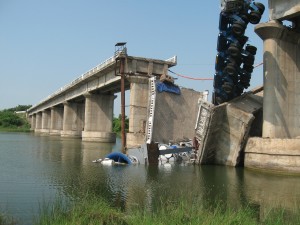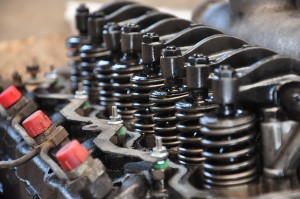Forensic Engineering
The engineer may be hired by a number of people. Insurance companies often utilise their expertise in proving liability or non-liability. Some disputes such as these may require court proceedings, in which the engineer must gather sufficient evidence to support or refute a case. Local Governments will often employ engineers, particularly in the examination of major disasters, such as bridge collapses, and aviation crashes. Manufacturers frequently take on forensic engineers to investigate particular faults in products in order to identify the cause and provide data for future improvements. In this case, they may need to retrace a series of processes and procedures in order to determine the exact origin of a problem. During some fault investigations, a dispute may arise between two parties, requiring litigation to resolve the situation. If neither side agree to accept responsibility for the fault which caused the incident, forensic engineers may be employed to provide evidence in order to establish the facts surrounding the case. The facts will then be presented in court, where the outcome can be decided.
Two broad types of defect may be dealt with during the investigation of a failed product or structure; primary and secondary. Primary defects are those that were present during or shortly following manufacture, such as cracks or voids which result in defects or failures when force is applied to them. Secondary defects develop with use. These defects can be further divided into various classifications of failure depending on the severity of their outcome. Whereas some merely deprive the user of a product, other failures may cause serious damage or even injury or death, these being known as safety-critical defects. If safety-critical defects are detected in commercial products, a product recall will often be initiated relating to the affected batch, or even a complete product withdrawal.
Product failure involves the breakage of a specific fundamental component of a product. Process failure refers to a fault in the manufacturing process of the product. Design failure is a flaw in the initial design of a product that ultimately leads to the failure of all products made using that design.
Forensic Electrical Engineering – A branch of forensic engineering focusing on the investigation of electrical failures and accidents relating to legal cases. This frequently involves fire investigation when electrical failures are the suspected cause. Various causes of electrical malfunctioning may lead to fire or electrical injury to the user. Defects in electrical wiring, caused through use or improper workmanship, are common causes that often require investigating, particularly if resulting in injury or death.
Commonly Used Methods of Investigation
Through the investigation conducted by the forensic engineer, a vast array of techniques is available for use in order to analyse evidence and ascertain certain details. The methods used are largely dependent on the circumstances of the investigation and what the engineer hopes to achieve.
Accelerated Life Testing – This is a method of testing the life span of a product, conducted in an environment to simulate the product’s behaviour in specific conditions with the results occurring at an accelerated rate. This is generally used in product analysis to establish the length of time for which a manufactured item will survive, and whether there are any conditions that will affect its functioning.
Differential Scanning Calorimetry – DSC is a thermoanalytical method of substantiating the composition of the materials based on the amount of heat required to increase the temperature of a sample and a reference for comparison. The amount of heat required to raise the temperature of the sample being analysed can be compared to known data in order to establish the composition of that material.
Failure Modes and Effects Analysis – FMEA is a way of assessing product defects and the potential reliability of the products. This is generally conducted in the earlier stages of product development in order to ensure failure does not occur.
Fault Tree Analysis – FTA examines product failure in a specifically structured and systematic way, displaying the relationships between different possible causes of the problem. The symptom, the factor displaying the problem, might be explained by numerous possible explanations. FTA allows these various pathways to be presented so that the engineer can determine the most logical path of examination to follow. This technique relies on detailed reports of the failure.
Fractography – This is the study of fractures in order to reveal details regarding the failure of an item or structure. This includes studying the age of fractures, how they were caused, and the nature and direction of the fracture growth.
Infrared Spectroscopy – IR spectroscopy studies the interaction of matter with infrared radiation by measuring the frequencies of infrared radiation absorbed by the materials under analysis. This can provide further details relating to the composition of a material.
Nuclear Magnetic Resonance Spectroscopy – NMR spectroscopy is a technique that can be employed in the detection of minute traces of impurities in a material. It utilises the magnetic properties of certain nuclei, allowing the information to be obtained on the type of chemicals present and their quantities.
Optical Microscopy – Simple microscopy or a hand magnifier may be used for close examination of the surface of a product. They can both be coupled with close-up attachments for photography. These methods can show cracks, scratches, contamination, and any other defects on the surface of the material.
Radiography – Using X-rays or neutrons, it is possible to internally examine products for any defects within the material.
Scanning Electron Microscopy – A form of microscopy used to detect minute damages caused to structures or items that may have resulted in, or at least contributed to, their failure. Using this technique, it may also be possible to reveal the presence of harmful or corrosive chemicals on the object.
Trace Evidence Analysis – Trace evidence is often vital in reconstructing the sequence of events, particularly in the case of vehicle accidents. Vehicles involved in collisions may leave tire marks on road surfaces, beneficial in determining routes of travel and speed.


